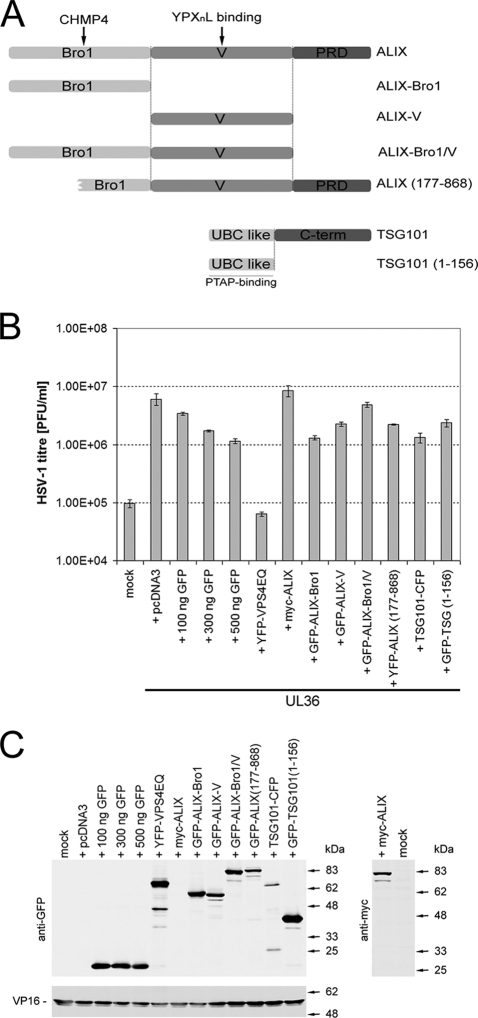FIG. 1.
Production of infectious HSV-1 is not inhibited by dominant-negative ALIX or TSG101 fragments. (A) Schematic representation of TSG101 and ALIX constructs used. ALIX-V or ALIX(177-868) and TSG101(1-156) have been previously shown to block YPXnL- and PTAP-dependent retrovirus budding, respectively. (B) COS-7 cells were cotransfected with a plasmid expressing the essential HSV-1 UL36 gene product, together with a plasmid encoding the protein of interest, an empty pcDNA3, or a concentration range of a YFP-encoding plasmid. Mock-treated cells (mock) did not receive any plasmid DNA. Transfected cells were infected with HSV-1 lacking the UL36 gene (KΔUL36), which will only produce infectious virions in UL36-expressing cells. Infected cells were scraped and sonicated to release infectious progeny virus and HSV-1 titers were determined by plaque assay on a UL36 complementing cell line (HS30). Bars represent the mean PFU per ml, and error bars indicate the standard errors of the mean of triplicate samples. (C) Protein samples collected from each condition were analyzed by Western blotting to demonstrate the expression levels of GFP, YFP, and myc-tagged proteins, as well as the viral tegument protein VP16.

